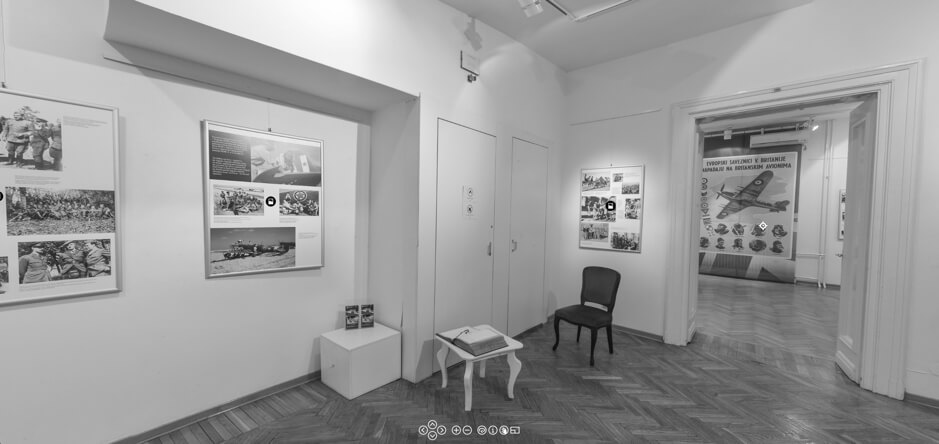In late March 1941 the Yugoslav people rejected joining the Tri-Partite pact – at a time when the United Kingdom was fighting alone against the might of Nazi Germany. Hitler was about to invade the Soviet Union and needed the raw materials found within the Balkans and in particular Yugoslavia, to keep his war machine moving.
Yugoslavia’s actions plunged it into conflict with Nazi Germany on 6th April 1941. Hitler’s military machine was at the height of its power – sadly the Yugoslav military were no match for it. However, what Hitler did not expect was that the Yugoslav people would not stop fighting, even after its military was defeated. It was here in Serbia that the first anti-Fascist resistance was established against the Axis in Europe. In doing so, Hitler’s invasion of the Soviet Union was delayed by six weeks. The Russian winter did the rest.
Those who joined the first Yugoslav resistance were known as Četniks (later to be officially known as the Yugoslav Army in the Homeland) – under the leadership of Colonel Dragoljub Mihailović. Mihailović movement was a continuation of the Serbian tradition of resistance that began during the Ottoman occupation. Two months later and shortly after the Nazi invasion of the Soviet Union, the Communist Party of Yugoslavia also turned against the Axis in response to Stalin’s ‘call to arms’ against Hitler. Josip Broz ‘TITO’ created what became known as the Partisans (later officially known as the National Liberation Army of Yugoslavia).
However, the conflicting aims of the two resistance movements – one to maintain the Kingdom of Yugoslavia, whilst the other to establish a social revolution and bring about a change in the style of government – meant that in the middle their mutual battle against the Axis, they also entered into a devastating civil war.
In the middle of this multi-faceted conflict members of a secret organisation, known as the Special Operations Executive (S.O.E.), was inserted into Yugoslavia. Their mission was to find out what was going on in the country and carry out Winston Churchill’s aim of taking the fight into the heart of Hitler’s ‘Fortress Europe’ and so “set Europe ablaze”. The material support provided by Britain and the Allies – first to the Royalists and then, from late 1943 to the Communists, ensured that the fight against Axis occupation was maintained throughout the war.
Thanks to this resistance and the actions and guidance of those British and Commonwealth officers attached to them, the Germans ability to supply their forces in Greece and North Africa was severely hampered and thus contributed to the defeat of Rommel’s Africa Korps. At the same time Wehrmacht and SS divisions- desperately needed on the ‘Russian Front’ – were instead forced to remain in Yugoslavia, in order to secure the resources and lines of communication that Hitler needed to keep his war machine running.
This exhibition will bring to life the actions of those officers and soldiers of S.O.E and other British military missions who operated in Yugoslavia, through the photographs they took and the reports they wrote. Many have never been seen or previously published in their current form. They have been drawn from the Imperial War Museum and National Archives in London, as well as the personal collections of the relatives of those who fought alongside the Yugoslav people during the dark days of 1941-1945.
By the time Yugoslavia was liberated from the Germans, its people suffered more casualties than the combined wartime total of the United Kingdom, France and the United States of America. The greatest Yugoslav casualties were sustained by the Serbs. This photographic exhibition is thus dedicated to the sacrifice of the people of Serbia, in recognition of their central role in the defeat of Fascism – as well as the families of those British and Commonwealth servicemen who, along with other Yugoslavs, fought against tyranny until its final liberation.
Colonel Nik Ilić, British Defence Attache

